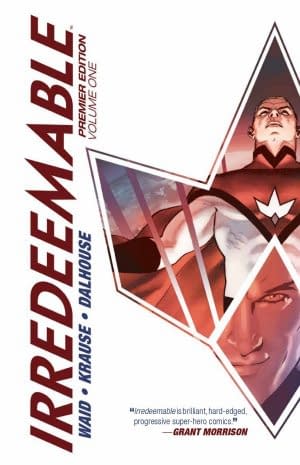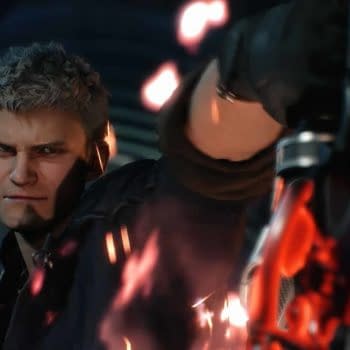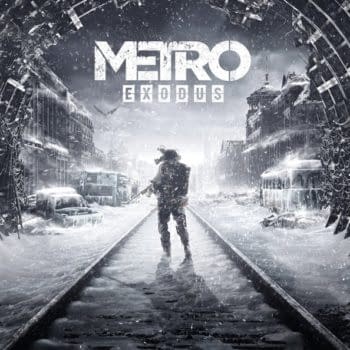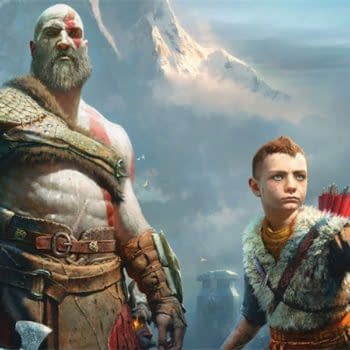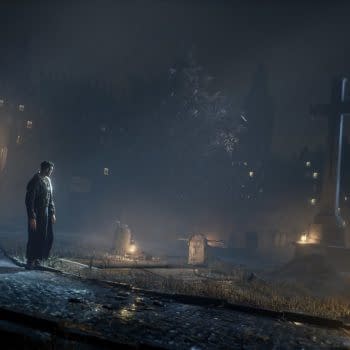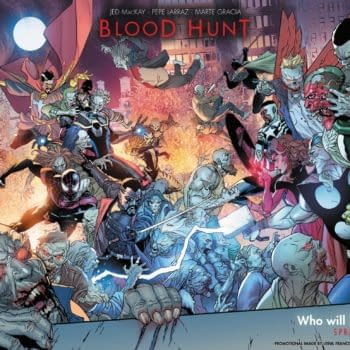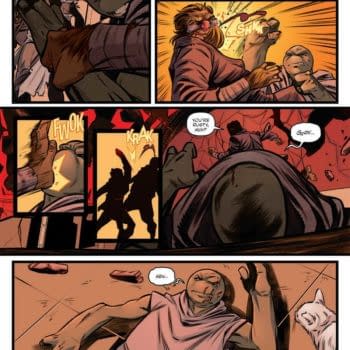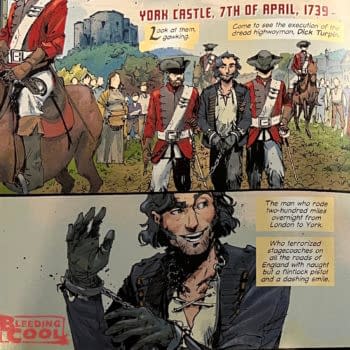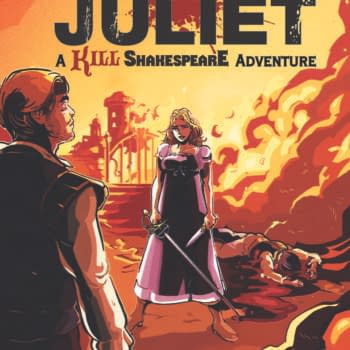Posted in: Comics | Tagged: coimcs, entertainment, irredeemable, james bond, sip kids, Thor's Comic Review Column
Thor's Comic Review Column: James Bond Volume 1 #1, Irredeemable Premier Edition And The Complete SIP Kids
THIS WEEK'S REVIEWS:
James Bond #1
Irredeemable Premier Edition HC Vol. 1
The Complete SIP Kids
James Bond, Volume 1 #1 (Dynamite, $3.99)
by Graig Kent
At the time of writing, I'm still a couple days away from seeing the latest Bond feature, Spectre, and my anticipation is high. I've distanced myself from reviews and spoilers and limited my viewings of the various trailers and commercials so as to not attempt any picking apart or prejudgement. It's only recently that there could even be considered spoilers for a Bond movie, really, as Daniel Craig's run has been fairly new ground for the film series; 24 entries deep (the original Casino Royale and Never Say Never Again aside) there hasn't ever really been a continuing story thread pulled through an entire run. Previous uses of SPECTRE were so jangled and inconsistent that Blofeld was never played by the same actor, and even things like Bond getting married and his bride promptly assassinated barely resonated from one movie to the next. That lack of continued narrative has allowed the franchise to establish each film as its own unique vehicle, making each an event unto its own for over 50 years. As well it has also allowed the character to survive now 6 different leads in the role (only a certain Time Lord can boast a better record), and as a result cleverly distinguish itself from its source material. The next Bond could be Idris Elba, Damian Lewis or Tilda Swinton (I'm starting a campaign) and it won't matter, the series at this point prides itself on interpreting the character differently at regular intervals.
I think that conversation of who will be the next Bond has opened up the fans' minds somewhat to having even more diverse interpretations of the character. The clamor over Daniel Craig's blue eyes and blonde hair were silenced almost immediately after Casino Royale's debut, and surely anyone else in the role, if given the right script, can make it work (provided they're British…or at least Scottish, or Irish or Australian…not American let's say) but it also gives way to having multiple interpretations on the the table at the same time. While new James Bond novels seem to crop up with more frequency than the films (and through to the early 2000's, they maintained a consistent timeline) Bond in comics has been, surprisingly, almost invisible. Outside of the wonderful Daily Express newspaper serial comic strip that ran from '58 – '84 (which Titan Books has reprinted in recent years), a short stint at Eclipse Comics in the late-'80's and a brief run of four original stories at Dark Horse in the mid-90's, Bond has been mysteriously absent in comics.
I get it though, the popularity of Bond largely stems from the films, and as much as comics try to present widescreen action (and these days films try to one-up the fantastical elements of comics) they're still two distinct mediums for telling stories, just as they're both distinct from prose. So in bringing Bond successfully to comics, there needs to be an understanding of how to establish the character for the venue, and a lot of that starts with who's behind the keyboard.
Warren Ellis is a smart guy, and a smart choice for kicking off Dynamite's new James Bond series (the fine print notes this series as "James Bond, Volume 1", while the cover presents it as "James Bond 007: Vargr", at least for this storyline). For starters, Ellis is British, and while Bond fans may be able to come to terms with a blue-eyed, blonde-haired Bond, having an American penning the character is tantamount to making the character American in some eyes. Secondly he's a writer of various media, so he's keenly aware of the differences in telling stories within them. Thirdly he's savvy, capable of deconstructing character or formula, but not as the point of a story, but in advance of crafting the story, in order to create something new and fresh, without retreading common ground. As such, with "Vargr", Ellis, with artist Jason Masters, crafts a new, but familiar Bond, owing much to the Fleming style of cold and ruthless, without neglecting the quippy charm of many a cinematic Bond. He's returned to the slim, darkly handsome, black-haired figure cut closer to Fleming's description of him (even with that scar on his cheek), but Ellis' touches find him fidgety when not in action, egocentric, barely outside the grasp of his vices and unimpressed with authority (though not outright antagonistic). Ellis does a solid job of defining who this Bond is in a quick 22 pages, while Masters gives him great physical life, laying the smarminess on thick, portraying a Bond all too keenly aware of his good looks, and using them at every advantage.
In keeping this iteration of Bond in SIS' real-life headquarters of Vauxhall Cross, it establishes some common ground with the Craig run of films. Moneypenny is introduced cleaning a gun at her desk, hearkening to Naomi Harris' portrayal of her as a contemporary of Bond's, while remaining a black woman (though distinctly not Harris). Moneypenny remains flirtatious with Bond, but adopting the hard-to-get role James traditionally played in their dynamic. M here is, for the first time I believe, a black man, and in Ellis' interpretation, has zero patience for Bond and his shenanigans. It's a different dynamic for the two, who are typically chummy, or at times familial. Here they seem stuck with each other, Bond's charms useless on M, and M almost eager to be rid of Bond.
The book opens with a stripped-down version of a cinematic Bond cold open, which in modern day 007 are full-tilt action sequences. Here Ellis and Masters stage a simple, yet brutal construction site fight sequence that finds them in a duel, but with shovels (with rather graphic results). Allotting only 8 pages to the opening sequence meant it had to be something smaller, and in this case defining, hitting home James' ruthlessness in the field.
The main story is about a new drug infiltrating the UK that either causes leprosy or disturbing hallucinations of one's own body. James is given the simple task of rooting out the manufacturer and "persuading" them from importing into the region. The final page gives us our first tease of the villain and his henchmen (though if they are at all involved with the drugs remains to be told), as well as introducing the henchmen's gimmick (because they all have to have one, no?). The stone-faced Mr. Masters (yes, same name as the artist) cannot experience or process pleasure in any way. As a result he wants to go to extremes to try to stimulate himself, particularly by hurting others, and Bond is put in his sights.
"Vargr", so far, is all set-up, with Ellis and Masters establishing their particular vision for Bond effectively and, what's more, without disappointment. This feels like Bond, but not any exact Bond we've known. What's left is just a taste of the story to come, and what's remains unknown is how will this series pan out. Will it be ongoing? A series of mini-series? From this creative team or just the first arc of an anthology by different creators? Will it continue as a character build or will each arch feel like a fresh start.
It's obviously a big deal, Bond being in comics (I'm not sure if it's 24 different collectible covers-big, but it's big), and all signs point to it being worthy.
Graig Kent thought his first Bond was Roger Moore, but it turns out he only ever saw the cold open to View To A Kill about a dozen times as a child. Upon receiving the 50th anniversary collection two Christmases ago, he got into Bond, hard. Having had only watched the Brosnan/Craig Bonds up to that point, it was a fascinating descent into mod-espionage fandom from which he's yet to emerge.
Irredeemable Premier Edition HC Vol. 1 (Boom!, $29.99)
By Cat Taylor
In a recent review, I stated that Mark Waid doesn't have the most original concepts for his stories, but that he is superb at taking established and mature super-hero subject matter and turning out a memorable and entertaining comic book. Case in point, his Irredeemable series told the story of a Superman archetype that had turned evil. While Superman and similar characters have been temporarily turned in their own comics, and while there have also been evil parallel versions before, there was always a balance in those stories or some factor that kept them from destroying the world. In Irredeemable, there is no such hope, at least not in this first volume. As a result, the first volume of Irredeemable reads more like a super-powered slasher film than a super-hero comic. The remaining heroes and the world at large desperately try to survive and figure out a way to stop an omnipotent being with no moral compass whatsoever. Their actions are futile as they watch friends and strangers alike being killed around them at their "Superman's" discretion. While such a story could very well be told like one of the countless Halloween knock-offs, Waid is able to make the story far deeper than that and explores the motivations and personalities of all the characters so that the reader is invested in what happens to them even though things seem hopeless.
Since Plutonian (the story's Superman) has already gotten in touch with his "don't care anymore" side at the beginning of the story, Waid slowly unravels what made him take a 180 mostly through flashbacks. As readers, we discover things at the same time as the other characters do, and not just about Plutonian's change, but also secrets that the other characters have kept from each other. Waid also has his characters attempt common solutions for a "Superman gone bad" from other stories. These include the "Batman failsafe", the arch-villain's schemes that almost work, and trying to find out secret weaknesses that only his best friends knew. The only things missing from similar stories so far are the deus ex machina "Kryptonite" and other nearly as, or equally, powerful heroes combining their efforts. Perhaps the "Kryptonite" will show up in later volumes (although this series originally ran several years ago, I never read past the issues in this volume). As far as other equally powerful, or nearly as powerful, heroes, this comic universe seems too small to have those, (minor spoiler alert?) at least until the cliffhanger at the end of this volume. Even then, I imagine Plutonian is going to beat the crap out of the cliffhanger character in the next volume because this series originally ran way more than eight issues.
Although Waid has more than proven himself as a writer (Kingdom Come, for instance), a big part of making a story like this work is the artist. Peter Krause more than holds up his end on that front. This isn't the only time that Krause and Waid have collaborated, and they are currently working together on Insufferable. So, there is a definite chemistry between the two of them. Krause uses a style that is reminiscent of classic Marvel and DC house-styles, and it makes this story feel more familiar than it should for a bunch of new characters. However, his biggest strength is in his ability to create emotional depth with his images in numerous scenes that are absent of text. My only criticism about the art is that the characters themselves don't have very memorable costumes or appearances. As substitutes for classic characters, it seems to me these folks should look cool. There's no doubt in my mind that the best known superheroes wouldn't be very popular without their iconic appearances.
The final matter to discuss here is "what makes this a Premier edition?" As stated earlier, this is a trade collection of a series that ran several years ago, and the series was also collected once before in a series of trade paperbacks. For this edition, the first volume is a collection of the first eight issues of the series. In the previous trade paperbacks each volume only contained four issues. Also, this collection has a hardback cover instead of paperback and includes a new cover image. To some readers' disappointment there aren't any "special features" included with this volume except for some of the covers from the original comic, and a lot of those were also in the trade paperback version. Despite that, there is at least one big change to these pages that was not in the original trade paperback collection. It's an odd difference that is the equivalent of George Lucas's Special Edition Star Wars DVDs. The change is that one of the characters is missing an arm and there is a flashback scene showing how that happened. I don't know why that change was made since it's not addressed in any author's commentary in the Premier Edition, but I double-checked my old trades and it's definitely a change. So, perhaps there are other similar differences that I missed.
If you already have this story in some version, you'll have to decide whether or not you want to repurchase it in hardback format. However, if you haven't already read this series and you like superhero comics that explore the darker aspects of the capes and tights world, then this series will not disappoint you. I'm as critical as anyone of lame "grim and gritty" Watchmen knock-offs but Waid is a writer that adds well-told stories to this superhero sub-genre. You may not necessarily want to invest the money it costs for these hardbacks, but I recommend that you at least read these stories in some format.
Cat Taylor has been reading comics since the 1970s. Some of his favorite writers are Alan Moore, Neil Gaiman, Peter Bagge, and Kurt Busiek. Prior to writing about comics, Taylor performed in punk rock bands and on the outlaw professional wrestling circuit. That's enough for now. It's time to clean the house. You can e-mail Cat at cizattaylor@hotmail.com.
Jeb looks around, and discovers nary a Secret Wars/Battleworld title to be found this week. Time for a break, then:
The Complete SIP Kids (Abstract Studios, $14.95)
By Jeb D.
Despite being something of a Terry Moore fanatic, I won't pretend he's never made a misstep (see: Runaways), and when it was announced that the cast of Strangers in Paradise would be appearing as juvenile versions of themselves in SIP Kids, I worried this might be another case of him wrong-footing it. While "kiddie" variants of various corporate superheroes like X-Babies and Tiny Titans have been generally successful, the constant reboot/rejigger that the Big 2 regularly engage in make it relatively easy for something like Li'l Gotham to read as just one more iteration of characters who've been morphing and shifting for decades. But SIP Kids is based on a specific set of characters whose storyline (despite its occasionally fanciful aspects) was not only definitive, but thematically adult: the danger was that translating those characters into pre-pubescent versions would feel at best irrelevant, and at worst somewhat quease-inducing. To say nothing of the fact that Moore was unabashed about using one of the 20th century's works of absolute genius, Charles Schulz's Peanuts, as his model. But I decided to take a chance when this collected edition hit, and, well… genius is as genius does, I guess– SIP Kids is a quiet triumph: beautifully drawn, cleverly plotted, skillfully observed, and hilarious.
As with the DC/Marvel kid superhero books, we're in an alternative reality: we're not seeing how the cast of Strangers in Paradise "really" grew up (many of them haven't actually met prior to the events of SIP); the premise is straight-up "What if they had all been kids together?" And while there's no question that there's a terrific kick for SIP fans in seeing how deftly Moore has incorporated the personalities of his adult characters into their elementary-school selves, those personalities are so vividly portrayed here that I'd have only slight hesitation in recommending SIP Kids to newbies. It's impossible for someone who's read Strangers in Paradise to really know how this comic will read to someone who doesn't already know the characters, but it's hard to imagine anyone not responding to Moore's humor and gift for visual characterization.
The four issues collected here each take place during a different season. We're "introduced" to the cast in summer, participating (with varying degrees of enthusiasm) in a youth soccer league. Moore wastes no time in adapting the various characters' personalities to their youthful environment: Katchoo's the high-spirited troublemaker from the wrong side of the tracks, Francine wants to like everyone and be liked, Darcy's a scheming little brat, Freddie's self-centered and demanding, Tambi's "ready to rumble," etc. David's the only one who feels slightly off as we meet him sitting on the ground, watching bugs, so oblivious to the antics around him as to appear mentally deficient. As Moore (re)introduces new characters from SIP into the book, he continually amazes at the way he's able to translate their essential qualities to these childish versions. Francine's good-heartedness, and Katchoo's anti-authoritarian streak, seem like fairly direct hits, but the most a propos and amusing is probably Darcy: the scheming villainess as spoiled little rich girl.
And for all the perfectly-timed sight gags and sharp dialog ("Nice pass, Beckham," Katchoo needles Freddie after he's knocked silly by a soccer ball), SIP Kids has the same ability as its predecessor to bring a lump to the throat, in the middle of the laughter: Katchoo has a rooftop scene here that's as poignant as anything in Strangers in Paradise. That konk from the soccer ball, by the way, also brings Freddie an intriguingly ambiguous vision of the future, the series' only overt allusion to its parent book (though there's a couple of fun Easter Eggs for Rachel Rising fans).
Issue #2 has the various kids converging at a ski resort, and Moore's wintry setting is gorgeous (the comics are colored by Steve Hamaker, and while I generally don't think black and white comics are "improved" by the addition of color, Hamaker's work on this series is so perfectly measured that I'd almost like to see what he might bring to a recolored Strangers in Paradise. Almost). There's some lovely action scenes of kids on the slopes, a fantastic running gag with a snowboard, and again, a touching moment, this time with Freddie; as with the Katchoo scene I alluded to, it's illuminating as backstory for Strangers in Paradise, even if it's not "canon." Nothing in SIP Kids really "excuses" the general jerkiness of his adult version, but it's not hard to imagine that the treatment we see the child Freddie receive here might screw someone up.
The springtime of issue #3 is the setting for Darcy staging the world's most selfish birthday party: in some ways, this story is the one that feel the most that it's signposting toward SIP. And what could be a more appropriate homage to Schulz than the Halloween setting of issue #4, with its pranks and costume mishaps (Darcy sneers at Francine's costume: "What are you, a cotton ball?" Francine: "I'm a princess, what are you?" Darcy: "Rich"). The seasons are out of sequence because Moore evidently wasn't even certain he'd continue the series past the first issue, or the second.
In some ways, SIP Kids is poised halfway between Peanuts and its companion work of genius, Calvin and Hobbes. The Peanuts characters live in an environment where adults are nearly nonexistent, and only occasionally impinge on the storytelling (almost always off-panel), while Calvin's flights of fancy are grounded (too often for his liking) in the world of his parents, babysitters, teachers, etc. In SIP Kids, the children are definitely living in an adult-directed world, like Calvin's, but like Charlie Brown and company, they have a specifically defined environment of their own, set aside from and operating on the periphery of adult-run activities like school, sports teams, family vacations, etc.
One of the difficulties in adapting Schulz' work to longer forms (like the TV cartoons, which crater in quality pretty quickly after the first few) is how perfectly he made Peanuts work in four panels for most of its run, so that long-form adaptations feel choppy, lurching from setup to setup, joke to joke. Moore makes the most of the extra space that a comic gives him: SIP Kids has plenty of room to breathe, dense with incident, with panels devoted to reaction shots and snappy back-and-forth conversations.
Issue #4 ends with Francine and Katchoo agreeing that they've just had the best year ever, and that the next will be even better. So far, I haven't seen any indication that Moore has any plans to continue the series, and of course, a concept like this can't stay fresh forever, but if he thinks he has more stories to tell of the SIP Kids, I'm right there. I don't know that I'd necessarily call SIP Kids the best comic I've read this year, but there's no question that none has given me greater pleasure.
Jeb D.



